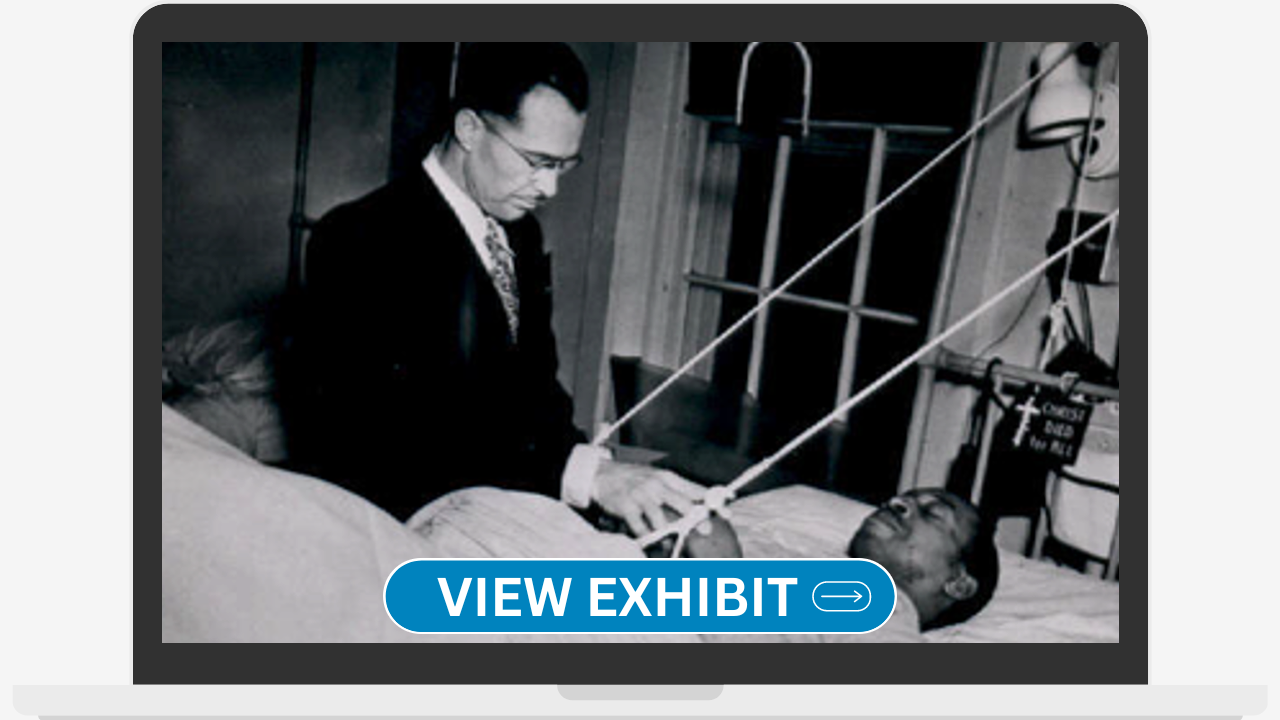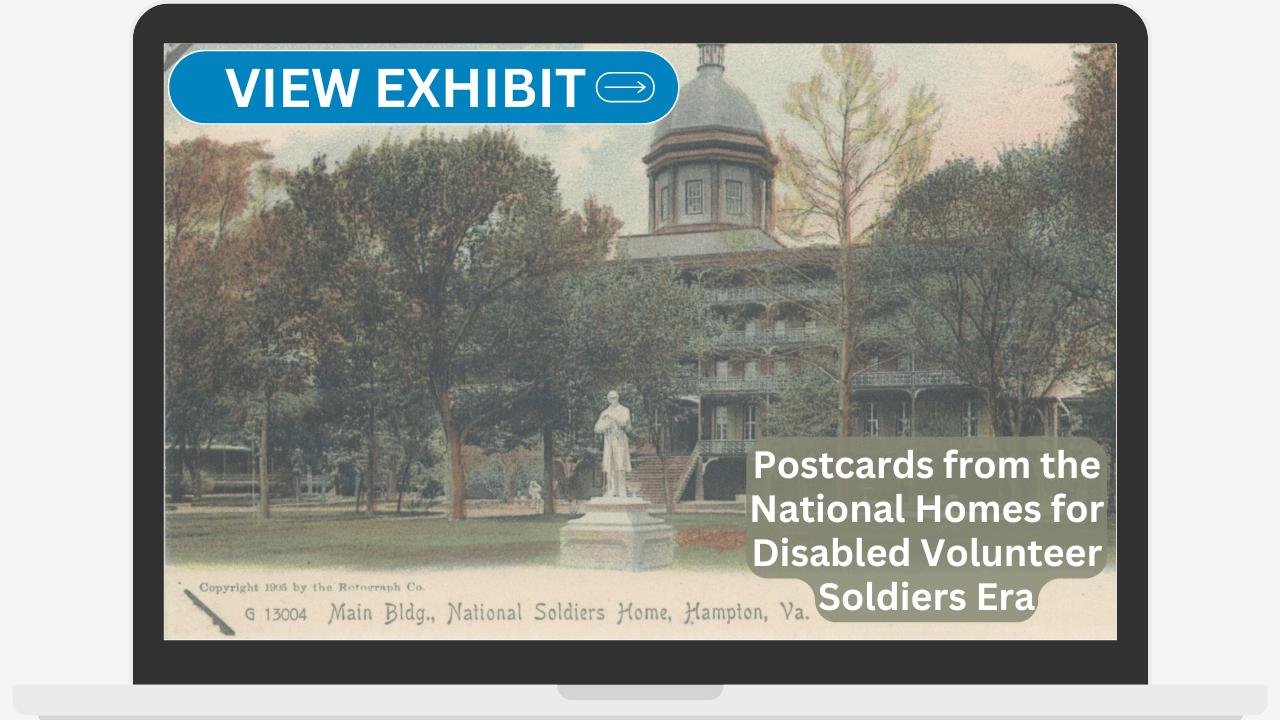Click on image to view the exhibit
The United States has compensated soldiers who were injured while fighting for their country since the Revolutionary War. It was not until after the Civil War, however, that the government established the first federally funded program, the National Homes for Disabled Volunteer Soldiers (NHDVS), to care for Veterans who served during times of war. VA History Office Intern Kara Wheeler has complied a collection of early 20th century postcards, images, and newspaper clippings to capture the architecture and community for Civil War-era Veterans in this exhibit.
Congress passed the bill creating the NHDVS on March 3, 1865, and President Abraham Lincoln signed it into law on the same day. The act established the first federal program to meet the medical and rehabilitative needs of America’s Veterans. The NHDVS set out to provide a home-like environment while also incorporating military structure. The first national home, called the Eastern Branch, opened in 1866 at Togus, Maine. Ten more branches were added to the NHDVS system over the next 60-plus years. After World War I, the focus of the national homes shifted from residential care to providing short-term medical treatment for returning soldiers and Veterans. Eventually the NHDVS system was absorbed into the Veterans Administration in 1930.
By Kara Wheeler
VA History Office intern; Graduate student at George Washington University, Museum Studies Program; and Army Veteran.
Share this story
Related Stories

Exhibits
To Bring Light to Where There is Darkness: VA Chaplains and Religious Artifacts from the National VA History Center
For more than 150 years, VA chaplains have served Veterans with care and compassion, proving that they are indelible to the fabric of Veterans' health. Objects in this exhibit, housed in the National VA History Center (NVAHC), help tell the story of chaplaincy’s enduring presence and its profound impact on Veteran care.

Exhibits
VA Research at 100: A Century of Medical Advancements
In 1925, 100 years ago, the Veterans Bureau initiated the first hospital-based medical research studies to address Veteran-specific issues like mental health, tuberculosis, cancer and toxic exposure. The program has since made significant medical breakthroughs and innovations, impacting the world.

Exhibits
Adaptive Exhilaration: Equipment from the National Disabled Veterans Winter Sports Clinic
In 2024, the National Disabled Veterans Winter Sports Clinic, hosted by the Grand Junction VA Medical Center and co-presented with Disabled American Veterans, will donate adaptive ski equipment from the early years of the event to the National VA History Center in Dayton, Ohio. The clinic started in 1986 when VA established it and then held the the inaugural event at Powderhorn the following year. The clinic welcomed approximately 90 Veterans from 27 states, bolstered by a volunteer staff of about 20. Despite skepticism from many health professionals of the era, the clinic underscored the importance of physical activity for persons of all abilities.
This exhibit includes multiple items that were used at the early clinics, which are finding a new home at the National VA History Center.



